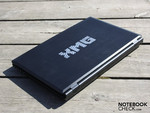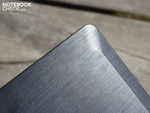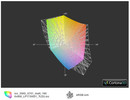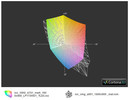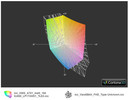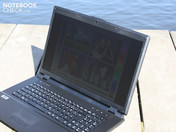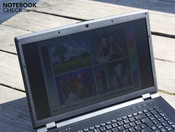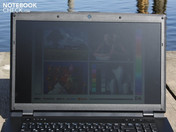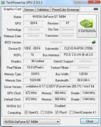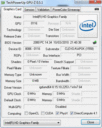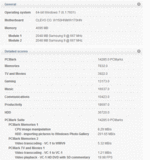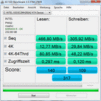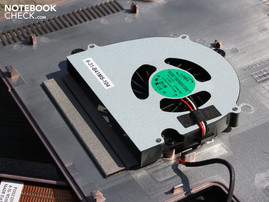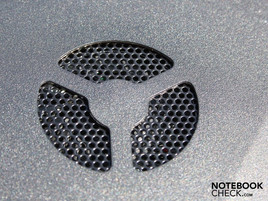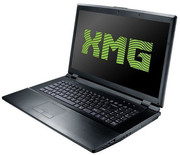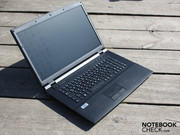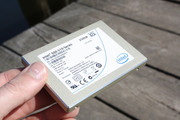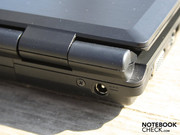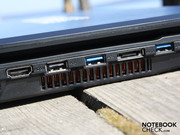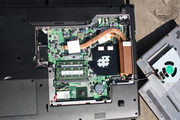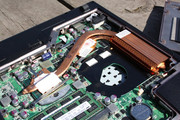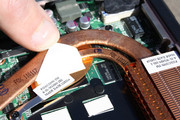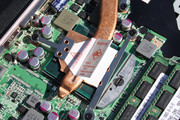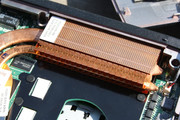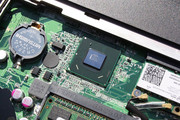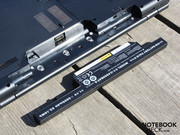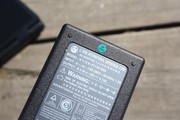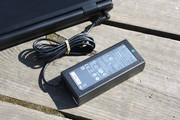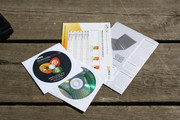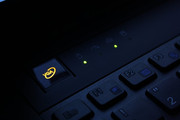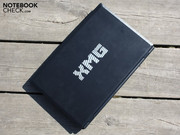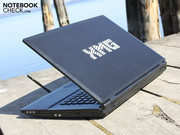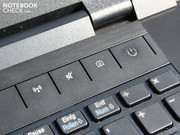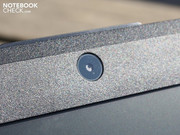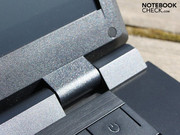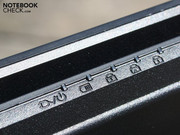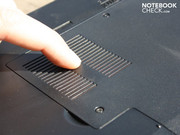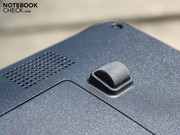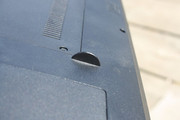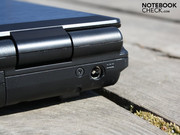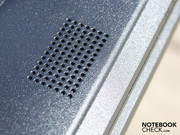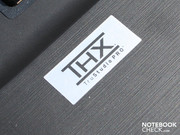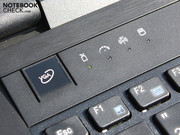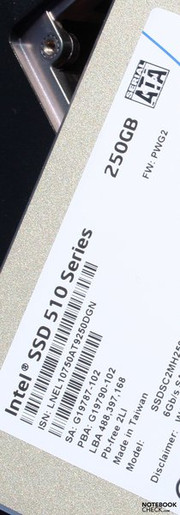Review Schenker XMG A701 Advanced (SSD) Notebook
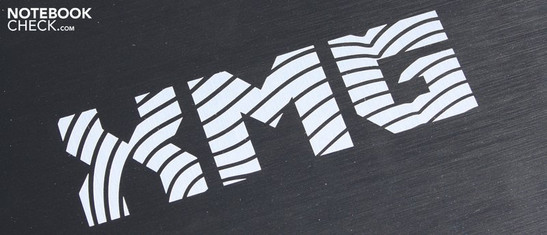
The notebook supplier, Schenker, bets on the pure speed advantage of its all round bundle, XMG A701 ADVANCED. After the small 15.6 inch brother, XMG A501 with a Crucial RealSSD C300, awed many notebook fans – or at least it was able to activate them (144 comments about the review), a 17 incher now complements the wish for a strong desktop replacement with a large, matt display.
The quad core processor and GeForce graphics haven't been changed (A501), but the SSD is now an X-25M Elm Crest (SSDSC2MH250A2K5) from Intel's 510 range. This 2.5 inch, 250GB memory costs at least 485 euros in stores. Schenker offers the test configuration for 1442 euros. How much notebook does the buyer get when only a few euros are left over for the case in acquisition? We hope, this review will answer all questions.
Case
If you're looking for a laptop that radiates understatement, the XMG A701 is exactly right. Not a hint of paint – either matt or high-gloss – coats this 100 percent plastic barebone (Clevo W170HN). Lid and wrist-rest are both brushed. Thus, they have fine, uneven rills. Merely the keys' immediate vicinity has a smooth, but just as uncoated, surface.
The pure plastic looks don't originate from purism, but rather from a low manufacturing and acquisition budget for this chassis. The dull look and plastic feel aren't a drawback if you don't care for gloss and glamour. The A701 deters fingerprints and resists scratches. No matter if ring finger, sausage sandwich or careless transportation in the backpack, the coating on this case isn't ruined as fast – there just isn't any.
The Clevo W170HN barebone isn't a miracle of stability though. The base unit is adequately stiff, but it can be warped by both hands. The base plate is easy to dent in the vents' area and beneath the DVD drive. In return, the hinges are pulled very tight and fit firmly on the lower part. They hardly allow the lid to teeter. The latter's stiffness could be better. Its surface can be depressed evidently with only little force.
Connectivity
The interface supply which includes 2 USB 3.0s and 1 eSATA is impressive. However, an ExpressCard34/54 and Firewire should have been installed to make the A701 to a good desktop replacement. Moreover, almost all ports are found on the sides (aside from power and Kensington on the rear). That blocks valuable room on the desk with a flood of cables. The three audio ports in the right front area are suboptimal for right handed users. The mouse is pushed aside when they are occupied.
Communication
An Intel Centrino Wireless N 1000 adapter takes care of wireless communication. It contains the Bluetooth 2.1+EDR module. The module can be unselected or upgraded (Bigfoot wireless w/o BT) when the laptop is bought at Schenker's.
Software
Schenker's notebooks are standardly delivered without an operating system and only with a driver DVD. For this reason, we didn't find any resource devouring bloatware. Windows 7 Home Premium 64 bit was installed for this review.
Scope of Delivery
The scope of delivery is modest. Schenker hasn't included anything aside from the 90 watt adapter, a quick guide, a driver and software DVD (Nero Multimedia Suite 10). Customers receive a Windows 7 data carrier if an operating system is ordered.
Warranty
Schenker offers a 24, 36 or 48 month pick up & return service for its devices. A part of this embraces 6, 12 or 24 months of immediate repair (in Germany).
Input Devices
Keyboard
Unfortunately, the keyboard clearly shows where the barebone manufacturer, Clevo, has made cutbacks. Instead of installing a keyboard that generously exploits the room of a 17 incher, the keyboard of the 15.6 inch case, B5130M, has been used 1:1. Thus, drawbacks that appear acceptable in a smaller size are senselessly transferred onto the 17 incher.
The arrow keys are squeezed in underneath the enter key and consequently minimizes the shift key. The number pad has been cut down to three columns. Therefore, the latter doesn't comply with the standard layout of desktop keyboards. For example, users will have to struggle with the comma in the upper left (rather than lower right) and a tiny enter key.
The keys have a crisp pressure point and a medium key drop, but unfortunately a wooden, hollow sounding stroke noise. The surface in the E-D-R area coils a bit, but they fit tight otherwise. In our opinion, the typing quality is acceptable.
Touchpad
The touchpad has a strangely dull surface that shows evident signs of use after only a short time. The finger doesn't glide very well and has to overcome a high frictional resistance. The keys with their insufficient, because very low key drop, also don't improve the feedback. The pressure point is very vague. The only advantages seem to be the available multi-touch gestures and the very quiet click noise.
Display
The XMG A701's WXGA++ display has a relatively high resolution of 1600x900 pixels. The LG screen (model: LP173WD1-TLD3; as in HP ProBook 4720s) has been AR treated. A FullHD option can be selected at Schenker's for only 28 euros.
High contrasts for gaming and the color perception in pictures, spreadsheets and texts are unfortunately non-existent. We measure a black value of 1.25 cd/m2 (center). That is a low contrast of 174:1. The result: The color impression is rather pallid and bleached. The poorly developed color spectrum isn't much of a surprise with this knowledge. The XMG A501 (15.6 inch brother) bids an extended color spectrum with its WXGA++ screen (a third of the picture). The Vaio EB4X proved just how good an affordable consumer screen can be with its FullHD display.
| |||||||||||||||||||||||||
Brightness Distribution: 88 %
Center on Battery: 217 cd/m²
Contrast: 174:1 (Black: 1.25 cd/m²)
55.2% AdobeRGB 1998 (Argyll 3D)
76.9% sRGB (Argyll 3D)
53.1% Display P3 (Argyll 3D)
The screen's LED backlight illuminates the display in the center up to 217 cd/m2. That is sufficient for indoor application scenarios. The average rate is 208 cd/m2.
The only sufficient brightness allows outdoor use only in favorable light conditions due to the matt display. Incident sunlight provides a too dark desktop. Consequently, the XMG A701 isn't very suitable for outdoor use. The AR treated screen ensures a reflection-free display workplace.
Users can recognize colors and script from the sides or from above due to good, that is wide, viewing angles. Top-notch viewing angle displays are extremely rare and, if at all, usually installed into expensive business or multimedia notebooks (e.g. Vaio EB4X). The XMG A701 doesn't go beyond a low standard. The view can only deviate up to 15 degrees vertically before the colors evidently invert. Inversion only sets in slowly on the horizontal plane, which allows us to see colors up to a deviation of about 45 degrees without falsifications.
Performance
The Sandy Bridge CPU, Core i7-2630QM, with 4x 2.0 GHz (Turbo 2.9 GHz) is currently a very frequently used quad core processor in strong multimedia and gaming laptops. The high performance is supported by a six L3 cache. The CPU is inserted (rPGA package) and can alternately be replaced by i3-2310M up to i7-2820QM (2.3 – 3.4 GHz). The 2630QM has a good performance for money ratio within the strong Sandy Bridge Quad Core CPUs.
Turbo Boost is also included in the 2011 Intel Cores and has been revised with the "Dynamic Range @ Turbo Frequency Limits". Turbo can go beyond the abovementioned 2.0 GHz if the cooling allows it (surpassing certain temperature limits). Hyperthreading, like in the previous Clarksfield range, is also onboard. Thus, the 45 watt CPU can calculate with 8 threads.
A graphics chip, named HD Graphics 3000, is incorporated into the processor (650 – 1100 MHz). It allows the utilization of Nvidia's Optimus together with the Nvidia GeForce GT 540M. Since performance fans always want to be informed about what's going on, the A701 has a VGA button and two status LEDs (UMA, GPU Optimus status). The priority is set on the HD 3000 when the button is green and on the GT 540M when it's yellow.
The multi core benchmark, WPrime, finishes better than the predecessors, 720QM (483s) and 740QM (427s). The fewer seconds, the better. Our 2630QM calculates with 337s, so 25 percent faster than the 740QM. Cinebench 11.5 (multi, 64bit) shows us what it's all about. A 740QM has to swallow quite a lot (~3.4). Merely a 2011 i7-2820QM (5.7 points, 2.3 – 3.4 GHz) with a higher clock rate can't be defeated (mySN XMG P501).
| PCMark Vantage Result | 14285 points | |
Help | ||
The work speed goes beyond the pure processing speed, which we assess with PCMark Vantage. The XMG A701 can benefit from its fast SSD memory here. 14285 points not only catapult the 17 incher into the upper rankings of gaming laptops and DTRs, but right into the first place. The XMG A501, with a Crucial SSD but identical CPU-GPU combination, is close behind the A701. In comparison: HDD systems, such as the Aspire 7750G, achieve 7402 points. Only machines equipped with a SSD, such as the Alienware M17x R3 (GTX 460M, i7-2630QM), achieve an equally high score (12700).
| 3DMark 06 Standard Score | 8199 points | |
| 3DMark Vantage P Result | 4423 points | |
| 3DMark 11 Performance | 1010 points | |
Help | ||
The dizzying sum of PCMark Vantage's HDD sub score of 36720 points already hints at what gigantic data throughputs the HDD tools determined. Solely the XMG A501, with the Crucial RealSSD C300 (CTFDDAC256MAG-1G1, 256GB), achieved as many HDD points. We placed the CrystalDiskMark assessment of the Crucial SSD at the very back. At first glance, it looked slower than the X-25M Elm Crest from Intel's 510 range in the A701. But the Crucial SSD is faster in read/write of small blocks.
The GeForce GT 540M (1024 MB DDR3) belongs to the upper graphics midrange. The chip based on the GF108 core (Fermi) supports both DirectX 11 and GDDR5 memories. However we are (as usual) dealing with a 1024 MB DDR3 video memory. As a feature of Clevo barebones (A501 also), it clocks with 900 MHz. For example, Acer uses 800 MHz (Aspire 5742G). The GPU supports Optimus and can be disabled in favor of the Intel HD 3000.
Synthetic Benchmarks
3DMark2006 (1280x1024) finishes with 8199 points. A Radeon HD6850M (~9700) can excel this with the same memory unit. HD6550 and 6650 (~7515) are slightly defeated. The 3DMark Vantage score (P4423) can also surpass the HD6550 (P3700). 3DMark 11 fetches 1010 performance points. The HD6550M (P1107) and even the older HD5650 (P1024) looks better here.
Risen (2009)
The clock rate of 900 MHz and the strong quad core jump start the GT 540M. Whereas the i5-450M was recently placed with a rate of 24 fps at the top of the data base in high details, it is now 27 fps. This difference also applies in medium. The graphically sophisticated adventure is smoothly playable in a mix of high and medium details.
| Risen | |||
| Resolution | Settings | Value | |
| 1366x768 | all on/high, 4xAF | 27 fps | |
| 1024x768 | all on/med, 2xAF | 42.5 fps | |
StarCraft 2
The A701 can also serve with a smooth game play in high details on the real time strategy game front. However, not in the native 1600x900 pixels. The frame rate caves in to 22 fps here. The 35 fps in high are about 25% more than the Radeon HD6650M and 6550M could offer (however, with an i5-480M or equal).
| StarCraft 2 | |||
| Resolution | Settings | Value | |
| 1360x768 | high | 34.6 fps | |
Gaming Verdict
The short trip into the World of Games shows the GeForce GT 540M (@ 900MHz memory) with a good gaming performance. If the inclined gamer doesn't change to the native 1600x900 pixels and doesn't overdo it with antialiasing, most games are playable in high details (1366x768). Nevertheless, the A701 isn't hardcore gamer. If you want to enjoy the latest games in the highest details, you'll be disappointed. At least a GeForce GT 445M/GT 555M or a Radeon HD5850/HD6850 would be necessary for that. For a detailed gaming test of the CPU-GPU combination at hand, please see the XMG A501.
| low | med. | high | ultra | |
|---|---|---|---|---|
| Risen (2009) | 42.5 | 27 | ||
| StarCraft 2 (2010) | 34.6 |
Emissions
System Noise
Schenker's 17 incher doesn't look very good in terms of system noise. The SSD theoretically can ensure a silent system in idle. But such phases are very short even during longer idleness. It actually does get silent for a few minutes (29.5 dB(A)), but then the fan repeatedly turns up sporadically to a noise level of 36.6 dB(A). When the case is heated up by games, the level even remains constant at 36.6 dB(A) in the subsequent idle. The A701 can really make a racket during games or in demanding applications (e.g. stress test): we measure 46.5 dB(A). At least the fan rotates evenly and only changes its speed after longer periods.
Noise level
| Idle |
| 29.5 / 35.6 / 36.6 dB(A) |
| DVD |
| 39.1 / dB(A) |
| Load |
| 46.5 / 46.5 dB(A) |
 | ||
30 dB silent 40 dB(A) audible 50 dB(A) loud |
||
min: | ||
Temperature
The temperatures really get down to business, but only during maximum load. We measure almost 62 degrees in the fans area on the bottom in the stress test. The average of the entire surface is only 35 degrees though. It gets quite warm on the top with up to 42 degrees, but it remains endurable. The always cool wrist-rest is agreeable.
The CPU heated up to 98 degrees Celsius in the stress test (Furmark + Prime95, all cores). The GPU couldn't be read out. However, the A701 remained stable, even after several hours of maximum load. The stress test shouldn't be seen as a reference for routine use. If you surf on YouTube and write emails, you can still take delight in temperatures of around 25 degrees Celsius. The case gets even cooler in idle.
(±) The maximum temperature on the upper side is 42 °C / 108 F, compared to the average of 36.9 °C / 98 F, ranging from 21.1 to 71 °C for the class Multimedia.
(-) The bottom heats up to a maximum of 61.6 °C / 143 F, compared to the average of 39.2 °C / 103 F
(+) In idle usage, the average temperature for the upper side is 21.6 °C / 71 F, compared to the device average of 31.3 °C / 88 F.
(+) The palmrests and touchpad are reaching skin temperature as a maximum (33.1 °C / 91.6 F) and are therefore not hot.
(-) The average temperature of the palmrest area of similar devices was 28.7 °C / 83.7 F (-4.4 °C / -7.9 F).
Speakers
Both stereo speakers deserve the title utilitarian at most. Their treble-heavy sound ruins gaming or music enjoyment. Fortunately, there are three audio ports, including a digital SPDIF. The speakers are hidden invisibly underneath the wrist-rest. The user should always fall back on headphones or external speakers for movies, games or music. The volume is low for a 17 incher, but you won't want to turn it up with this sound quality anyway.
Battery Life
17 inchers haven't had the best battery runtimes in the past. Especially those with quad core CPUs. We remember the Asus N73JQ with 2 hours for WLAN surfing. It's different in the A701. It reaches good 3:38 hours in the WLAN test. The 17.3 incher even lasts for whole 4:45 hours in idle. But this isn't a relevant work or entertainment scenario. If you watch DVD movies on the go on the 17 incher, you'll be able to manage with 3:08 hours. That's enough for two movies. The charge time is pleasantly short with 110 minutes. We've experienced devices with a charge time of up to 240 minutes here.
The (for a quad core) low power consumption of 18.6 watts in idle (idle minimum) confirms the viable office battery runtimes, despite the strong processor. However, the multimeter quickly climbs to 25.7 watts in high performance mode (wireless on, highest brightness). In any case, it's less than the Asus N73JQ-TZ087V (740QM, 19.3 to 29.5 watts) pulled out of the mains.
The counterpart is the power consumption during load. The A701 really gets hungry in the stress test of CPU and GPU (Prime95, Furmark) with 106 watts. 88 watts are due when solely the GT 540M is calculating (Furmark) (@3DMark 2006: 80 watts). The 90 watt adapter could be somewhat overtaxed in some cases. However, the adapter's temperature of 50 degrees in practical use is acceptable. The leniency for the power output seems to be sufficient. Anyway, games as listed won't drive the A701 beyond 90 watts.
| Off / Standby | |
| Idle | |
| Load |
|
Key:
min: | |
Verdict
Performance enthusiast won't find a way around a 2.5 inch SSD in a laptop when looking for the fastest hardware at an affordable price. Apart from the technical advantage of insensitivity, the read and write rates are miles away from the rotating disks.
The fast accessing of Intel's 510 range SSDs (250 GB, 485 euros) ensure an extremely good application performance. This is not only recorded by PCMark Vantage & co., but we also noticed it while we installed and executed programs. All rounder qualities are shown in connection with the Sandy Bridge CPU generation's quad cores and the solid gaming performance provided by a GeForce GT 540M to make a desktop PC obsolete.
Buyers have to make a compromise by way of the case, in favor of an attractive price (test configuration with a SSD: 1442 euros). The feeling that you are handling a wobbly plastic box with boring looks here and there can only be ignored with effort. The wooden sounding typing keys and the dull touchpad dim the pleasure about the performance machine considerably. In return, its suitability for routine use due to the insensitive surfaces, matt TFT and the 3:30 hours of battery life is very good. Unfortunately, the cooling system's almost permanent noise emission spoils the Elm Crest SSD's silence advantage.




